Dog Tracker Chip: What Are Dog Microchips vs GPS Trackers?
Ever wondered if there's a dog tracker chip out there combining both microchip and GPS functions? Sounds too good to be true, right? Well, that's because it is. Dog tracker chips don't exist - and microchips and GPS trackers are fundamentally different products. Here's how they work.
Here’s a common question you’ll come across as a dog parent wanting to stay on top of your buddy’s safety: what’s a dog tracker chip?
And the second most common one: is a dog tracker chip – or microchip – the same as a GPS tracker for dogs?
Short answer: no. While both microchips and GPS trackers can keep your dog safe if they escape home or get lost outdoors, they’re both fundamentally different products. And seeing as there are so many reasons why dogs run away, it’s always better to stay informed.
Because ultimately, a microchip can only help someone identify your lost dog. A GPS tracker is your key to tracking down and finding your dog by yourself.
(Also a dog tracker chip in the sense of a GPS implant for dogs doesn’t exist on the market yet – and it wouldn’t be a great idea anyway.)
So in this article, we’re taking a deep dive into GPS dog trackers, microchips for dogs – and their key differences. Let’s get started.
- Myth: You can track your dog with a microchip
- Fact: Microchips for dogs are simple identification chips
- How much would a microchip for dogs cost?
- Can a microchip help me find my dog if they get lost? Or kidnapped?
- GPS dog tracker: real-time tracking device for lost dogs
- Tractive GPS for dogs: a life saving technology
- Summary of differences: microchip for dogs vs. dog GPS trackers
- Dog microchips, GPS trackers…what do I need to keep my dog safe?
Myth: You can track your dog with a microchip
Like any loving dog parent, your first priority is likely keeping your dog safe. So you might’ve heard about microchips as well as GPS dog trackers and wondered: is it possible to combine these two into one? That’d make the perfect GPS dog tracker chip, right?
Well, as the leading expert in wearable pet technology, we definitely agree that this would be the ideal pet safety solution.
But let’s clarify things right off the bat: right now, there’s no dog tracker chip that combines both a microchip and GPS tracker into one.
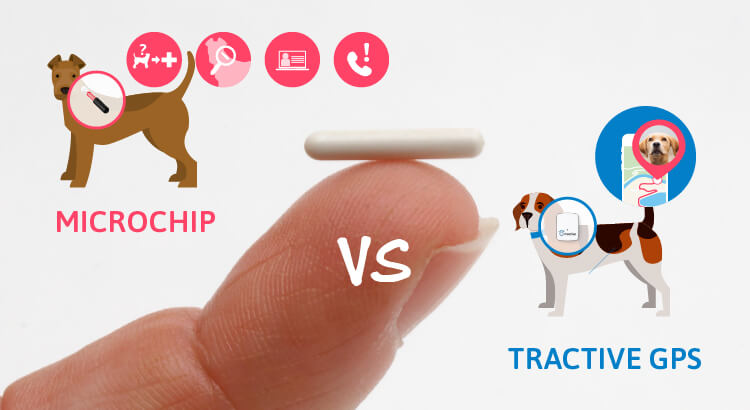
Yes, you heard us right: there’s no such technology which combines both a microchip and GPS tracker into one. Not yet, anyway. Why?
- Well firstly, it’s not possible to implant a GPS tracker under the skin of a dog.
- Second, current microchips for dogs do not offer GPS tracking.
Here’s a short infographic illustrating the differences between these two types of technology. Skip ahead if you’d like a summarized version a little further below:
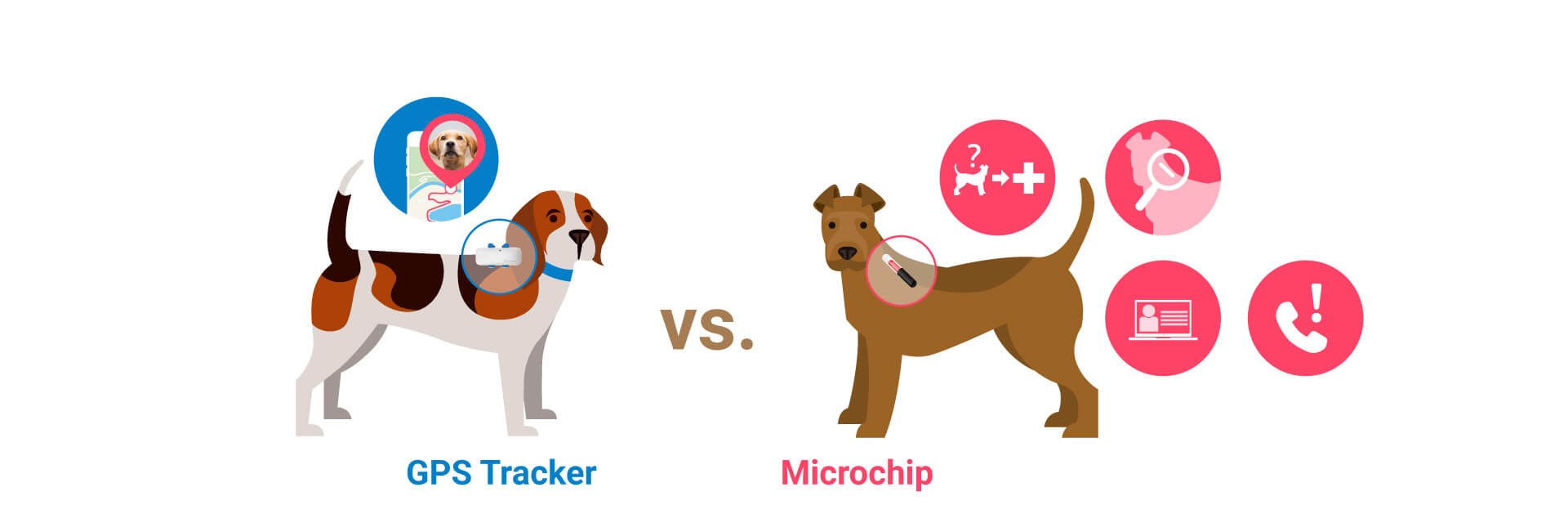
Fact: Microchips for dogs are simple identification chips
The microchip for dogs is a radio-frequency identification (RFID) implant¹. As this name suggests, the chip is used for identification purposes only.
- It’s composed of a tiny, electronic chip, each of which carries a unique identification number.
- Enclosed in a glass cylinder, about 11-14 mm long and 2-2.3 mm thick, the chip is about the size of a grain of rice.
- Microchips weigh roughly 0.025 grams.
⚠️ Microchips are not big enough to contain hardware for GPS or another localization technology at this time. So the term “dog tracker chip” isn’t really accurate, since it isn’t possible to implant a GPS tracker into your dog’s body.

“A battery pack is built from very poisonous chemicals. A little puncture can lead to a leakage, fire or explosion. That’s why implanting a battery pack under the skin of your dog or cat can be very dangerous. So we wouldn’t recommend it.“
– Ivelin Nenkov, Embedded Systems Engineer at Tractive since 2016
Read more: GPS Implant For Dogs: Myth Or Fact?

Microchips only work in cases where a dog who has been micro-chipped is lost and then found and brought into a vet:
- Vets can identify the owner of the dog by using a scanner which reads the microchip ID.
- This chip ID is linked to the owner’s contact information and registered in a microchip database.
So make sure you keep the information linked to the chip ID up to date. Now, for example, if someone finds your dog and brings them to a vet, they can contact you to pick up your dog.
Micro-chipping has become a common practice and is now legally required in many countries. The advantage of the microchip is that it’s a permanent and safe solution for identifying your dog.
Read more: The Pet Lover’s Guide to Dog Microchipping
How much would a microchip for dogs cost?
Microchipping your dog can cost anywhere from $0-$70, depending on where you live and where you have the procedure done. Some organizations like Blue Cross in the U.K. offer the service for free, since dog microchipping is mandatory there.
But remember, the common microchip for dogs does not contain GPS technology. Which means you won’t be able to track your dog with it.
I.e., don’t expect your microchip to be a dog tracker chip, like a GPS tracker. Rather, it’s a “dog identifier chip.”
💡 Besides getting your dog microchipped, you can buy a GPS dog tracker for $49 + subscription fee and track your dog anywhere, anytime – in real-time and over an unlimited range.
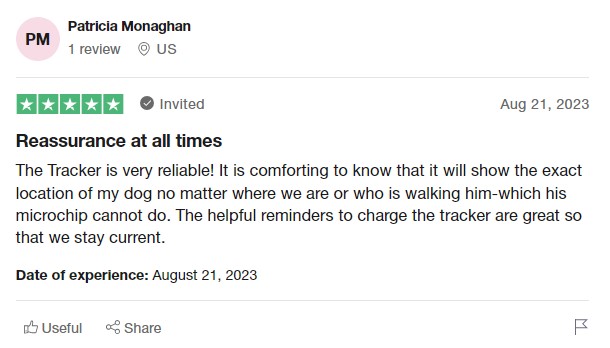
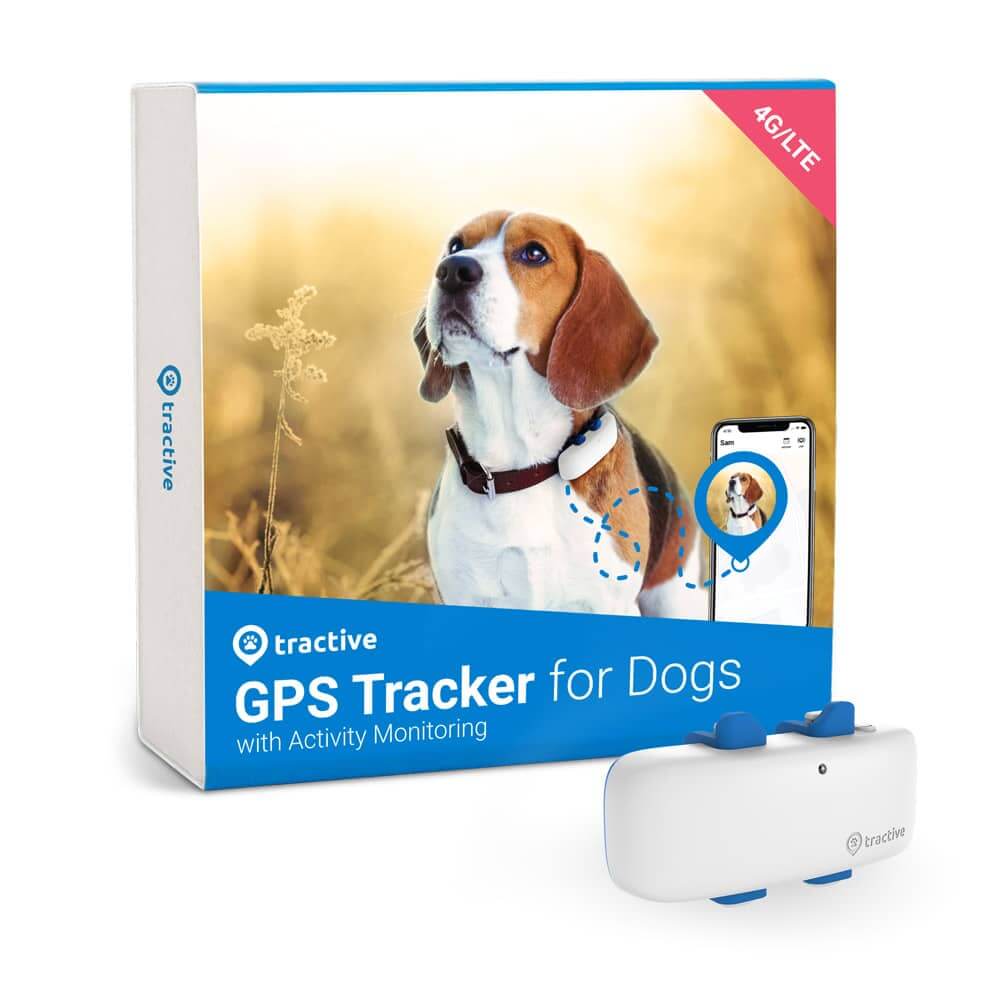
Always know where your dog is
Follow every step in real-time with unlimited range. Get alerts if they wander too far. Keep them happy & healthy with Wellness Monitoring. And let others – like walkers or sitters – keep an eye on your dog too.
Can a microchip help me find my dog if they get lost? Or kidnapped?
In short: no. When it comes to finding your lost dog, microchips are extremely limited in their use. The only way they might help is if someone finds your dog and then brings them to a vet, who can then identify your dog via their microchip.
⚠️ Now just imagine if your lost dog is picked up by a pet thief instead? If your dog is a rare breed or hasn’t been spayed or neutered yet, a pet thief is unlikely to return them to you safe and sound. (Or without demanding an exorbitant finder’s fee.)
Read more: Dognapping: Pet Kidnapping And How To Keep Your Dog Safe From Dog Thieves
Because of this, it doesn’t make sense to rely on a microchip to find your dog in emergency situations. In times like these, you’re best off with a dedicated GPS dog tracker.

Kathy, an off-leash Beagle was hard at work at her training – with her dad tracking her position in real-time through the Tractive GPS.
Suddenly, he noticed she was traveling at high speeds and way off-course!
From her movements, her dad immediately realized she’d been dog-napped and the kidnappers were driving off with her in their car.
Tracking her with Tractive’s LIVE Mode, her dad called the police and after a two-hour car chase had her back in his arms, safe and sound.
Not all dogs are this lucky. So while it’s a good idea to get your dog microchipped, it’s a great idea to combine a microchip with a GPS tracker. Helping you stay on top of your dog’s safety from all sides.
GPS dog tracker: real-time tracking device for lost dogs
Unlike a microchip, a GPS tracker allows you to track your dog in real-time, so you can find your dog immediately, should they ever go missing.
How does it work?
A GPS tracker contains a GPS antenna and other important hardware that connect to local satellites. This enables the the device to locate itself anywhere in the world.
- It then sends the calculated location coordinates from the tracker to the Tractive servers.
- Then, from the Tractive servers, these coordinates transfer to the Tractive GPS app on your smartphone with the help of the local mobile network – just like sending an SMS.
For this reason, GPS trackers work over any range, in over 150 countries worldwide, and at times, even without a SIM card or subscription plan. (Though we’d highly recommend getting one with both to get the full benefits of stress-free pet tracking.)
💡 GPS trackers, unlike microchips, allow you to track your lost dog in real time – dramatically increasing your chances of retrieving a lost or stolen dog.
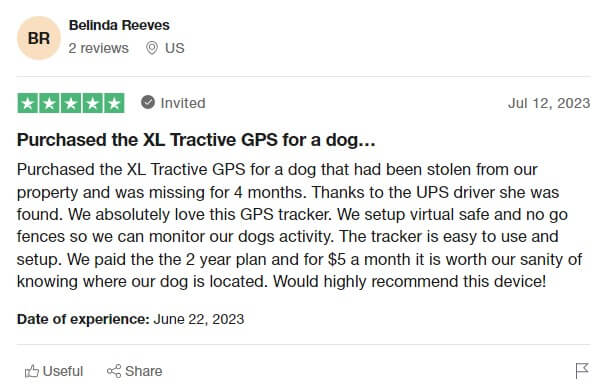
The Tractive GPS for dogs
The Tractive GPS Dog Tracker is one of the most popular and best-selling GPS trackers for dogs around the world. With its LIVE Tracking features, dog parents around the world can track their beloved canine family members in real-time. You can view your dog’s location, track, and retrieve them anytime they’re wearing the GPS tracker.
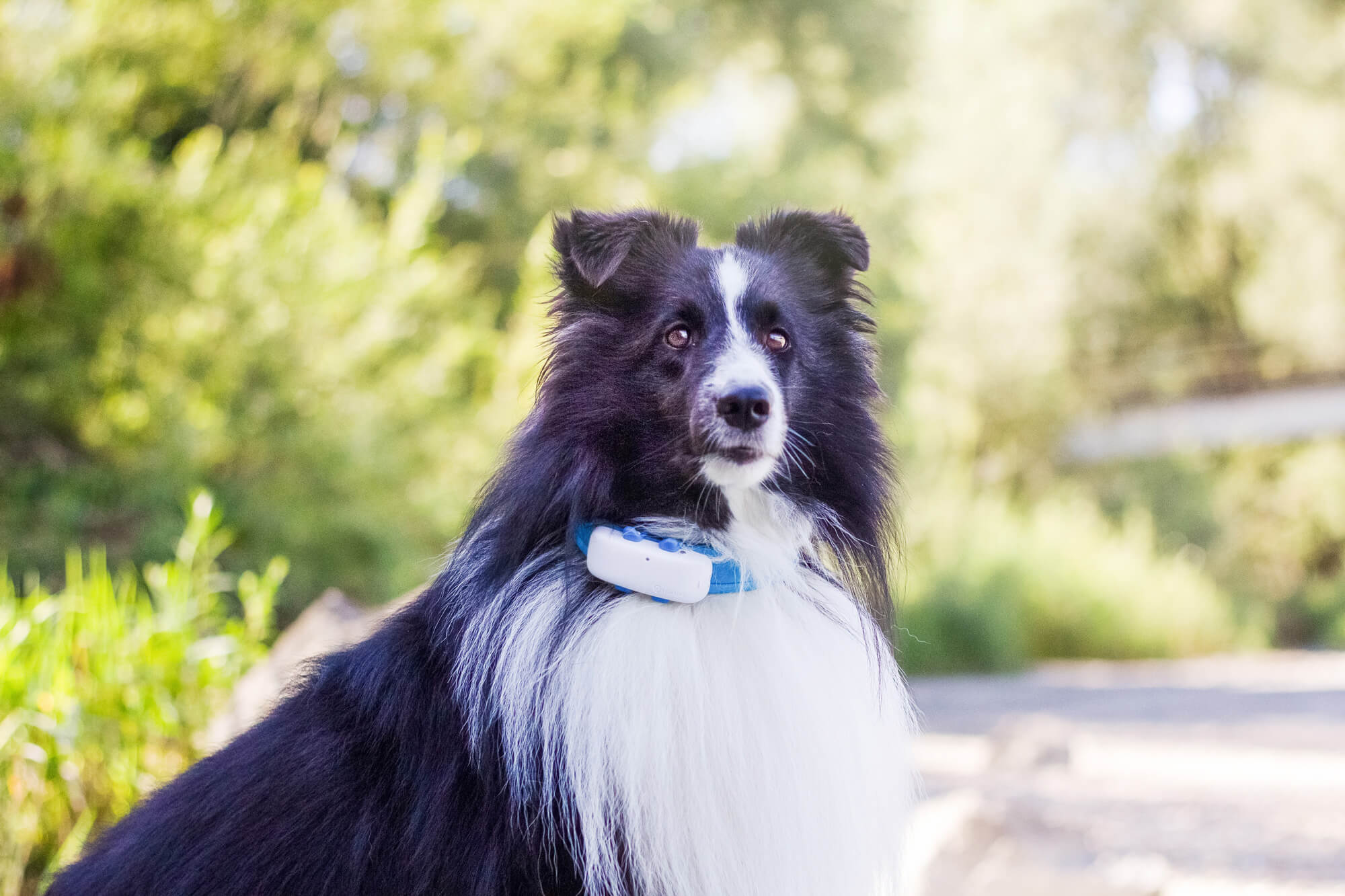
You can easily attach the tracker to your dog’s collar or harness using the included mounting clips. Below are some additional features of the Tractive GPS tracker for dogs:
- Real-time, LIVE GPS Tracking – with location updates every 2-3 seconds
- Virtual Fence – get notified if your dog leaves the safe zone
- Wellness Monitoring – keep track of your dog’s activity and sleep stats
- Location History & Heatmap – see where your dog has been & where they spent the most time
- Comfortable, small & lightweight – fits collars and harnesses of most sizes (up to 1 inch wide)
- Light & Sound – activate the LED light or buzzer to help you find your dog in the dark
- Worldwide tracking & unlimited range – for the price of a cup of coffee per month
- 100% Waterproof – adventure-proof, too
- Durable & shock-resistant
- Family & Public Sharing – let trusted friends and family track your dog
- Find Mode – find your dog even at close range or indoors
- Power Saving Zone – connect your home’s Wifi so the battery lasts even longer
- Alexa compatible
Get a Tractive GPS Tracker today or visit the Tractive Help Center to learn more about the features above.
Tractive GPS for dogs: a life saving technology
Dog owners around the world are taking advantage of the latest GPS tracking technology to keep their dogs safe. In the post below, one dog owner shares how the Tractive GPS Tracker saved their dog’s life when she had fallen into a dangerous situation:
And if you thought just LIVE tracking works during emergencies, think again. Tractive’s Heat Map and Location History helped rescue Imogen the Borzoi when she crashed through the ice of a nearby lake. (Pictured below, safe and sound, next to her Tractive device.)

Imogen’s mom immediately noticed she was outside her “safe zone” – and likely in danger. Even though Imogen was in the water, her Tractive GPS helped signal her location. So her mom could identify where she was, rally some helpful neighbors, and rescue Imogen from freezing and drowning.
Read more: Imogen The Dog Saved From Frozen Lake Thanks To GPS Tracker
Summary of differences: microchip for dogs vs. dog GPS trackers
Here’s a quick summary of the differences between microchips for dogs and dog GPS trackers:
| Details | Microchip for dogs | Tractive GPS Tracker |
|---|---|---|
| Size | 12 x 2 mm | 72 x 29 x 16 mm |
| Weight | 0,025 g | 35 g |
| Implantable | ||
| Waterproof | ||
| Battery life | No battery included | Up to 7 days |
| Upfront cost | ~85 € | 49,99 € |
| Ongoing costs | None | Yes* |
| Location tracking | ||
| Are you going to have to rely on strangers? | Yes | No |
| Real-time location updates | ||
| Legal requirement | Varies from country to country | No |
| Theft insurance | No** | |
| Area of operation | Worldwide | Worldwide |
| Escape alert | ||
| Activity tracking | ||
| Sleep tracking | ||
| Health alerts | ||
| Light & Sound tracking | ||
| Dog weight requirements | None | From 4 kg/~9 lbs onward |
#1: Function
Despite common belief, GPS trackers and microchips serve two completely different functions:
- A microchip allows dogs who have been taken to a vet to be identified according to their microchip ID number.
- A GPS tracker allows you to actively locate your dog in real-time.
#2 Hardware
To provide the above described functions, GPS trackers and microchips rely on different hardware components, each used for unique purposes:
- A microchip only has the simple function of providing an ID number that can be linked to your dog. It’s therefore composed of only a tiny, electronic chip enclosed in a glass cylinder.
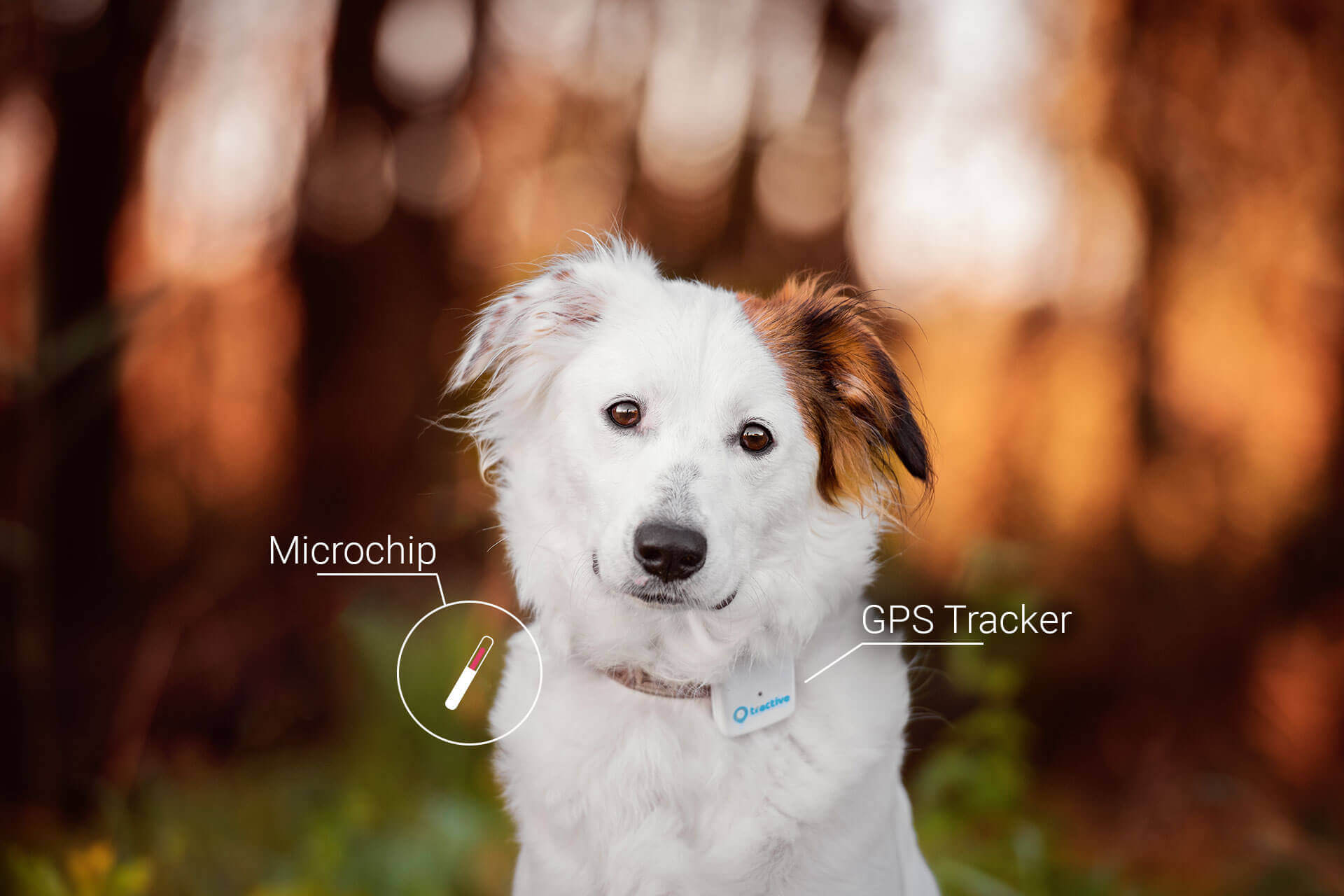
- GPS trackers offer all different kinds of features to help you locate your dog. The necessary components of a GPS tracker include a GSM module, GPS antenna, LED light, loudspeaker, battery pack, and SIM card.
#3: Size
As a result of the above mentioned functions & hardware components of each device, the size of microchips and GPS trackers varies greatly:
- Containing only an electronic chip that can be read by a RFID scanner, microchips are about the size of a grain of rice.
- In contrast, GPS trackers must be big enough to include the above-mentioned hardware. As a result they have dimensions of about 72 x 29 x 16 mm and weigh 30 grams.
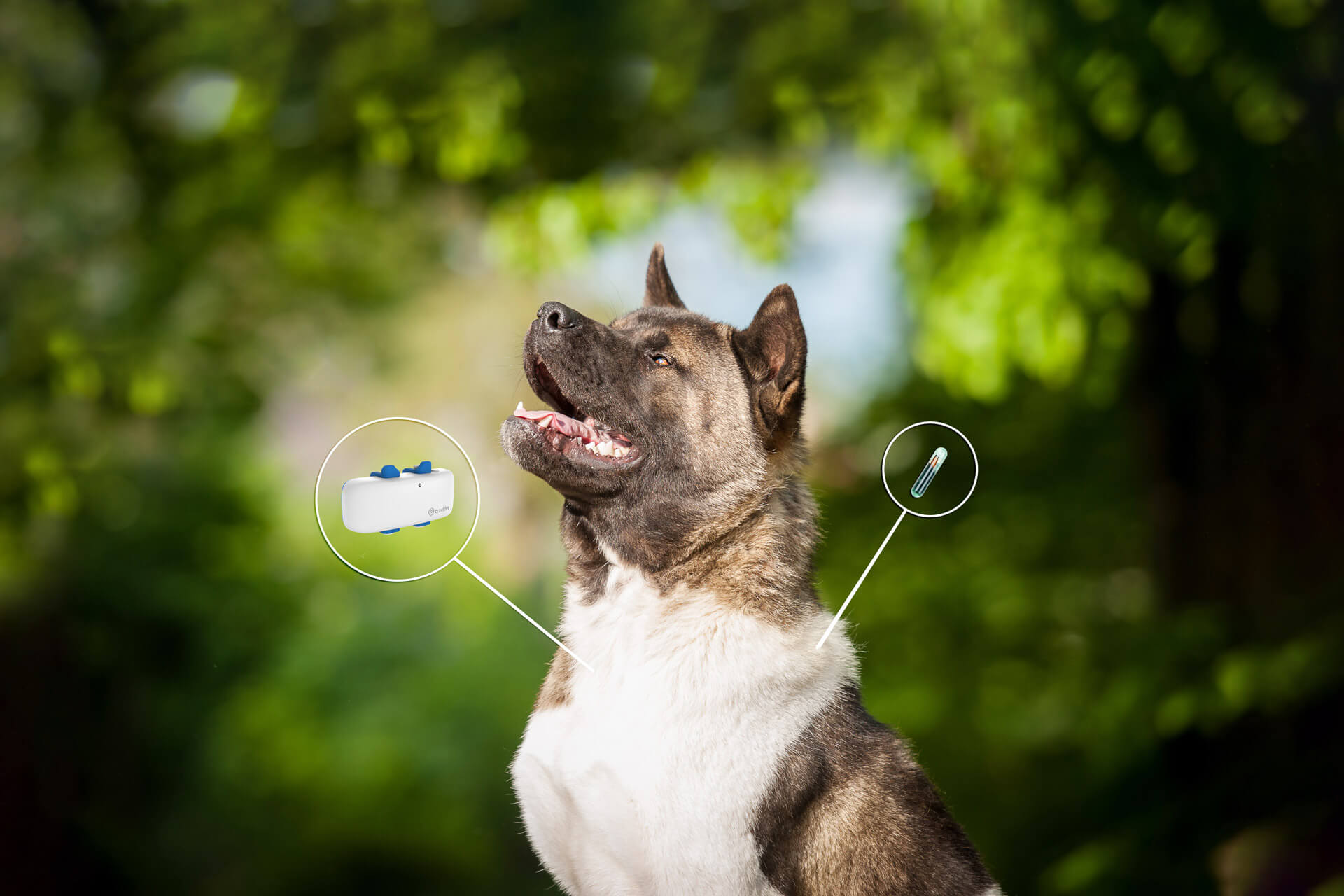
Considering all this, GPS technology does not exist in microchip form at this time.
Dog microchips, GPS trackers…what do I need to keep my dog safe?
Losing your dog can be a scary experience. To ensure that your dog is never lost again, we recommend using all of the following:
- An ID collar tag where your name and contact details are clearly visible.
- A microchip implant to help identify your dog in case they get lost.
- A GPS dog tracker, so you can track your dog in real-time, anytime they leave your sight.

This way, your furry friend will always be by your side!
For a super quick distinction between the two, here’s a video that covers the differences between microchips and GPS trackers:
And if you’ve found this post useful, share it with a friend or a loved one – and let’s help build a safer, kinder world for our furry friends together.




